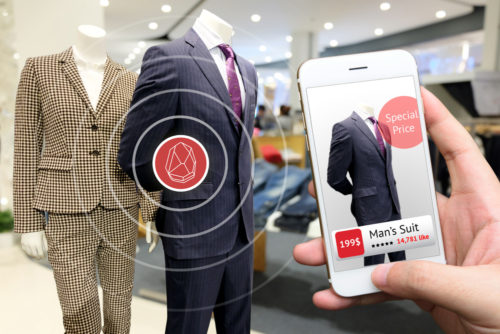 The line between a positive brand experience and a creepy one is easy to miss, especially for marketers focused on personalizing customer engagement. Brands collect substantial amounts of consumer data to deliver individualized experiences; with that data comes the challenge of ensuring they stay on the correct side of the line between creepy and personalized. As brands establish trust and provide added value to consumers over the long term, customers start to share more data and the symbiotic cycle continues.
The line between a positive brand experience and a creepy one is easy to miss, especially for marketers focused on personalizing customer engagement. Brands collect substantial amounts of consumer data to deliver individualized experiences; with that data comes the challenge of ensuring they stay on the correct side of the line between creepy and personalized. As brands establish trust and provide added value to consumers over the long term, customers start to share more data and the symbiotic cycle continues.
When retailers violate the unspoken contract of that relationship by crossing the line between personalized and creepy, customers no longer see value in continuing to interact. This is further complicated by how few consumer interactions are personalized; only 12 percent according to one study. Brands seeking to increase that number must understand that they are building a long-term relationship with consumers and base that relationship on trust, transparency, and a mutual value exchange.
Retail Personalization Is a Value Exchange
Personalizing the customer experience comes down to a question of trust and a question of value. Consumers need to trust that retailers will keep their personal data secure, and they need to receive something of value in return for their information. This value exchange is a two-way engagement where customers provide their data and retailers provide personalized offers and messages. Retailers must build the trust that underlies this exchange of value over time; 79 percent of customers want brands to understand and care about “me,” so taking the time to build consumer trust is valuable.
This desire for brands to care about their customers is why Apple has become one of the world’s most trusted brands. Apple is highly customer-centric in their product design and product security, and as a result has a high number of loyal customers. Apple is consistently ranked highly on lists of the most trusted brands because of this approach, which they have maintained for years. They have amassed a substantial amount of information on their customers as well, but their brand reputation is such that consumers trust them to use that personal data wisely.
Retailers may not have the same devoted fan base as Apple, but there are other ways to build trust. One of the most direct is through being transparent about what consumer data is collected and why. One recent study found that 83 percent of consumers will share their data in exchange for a personalized experience, but only if businesses are transparent about how the data is used and that customers retain control of their information. This is important as a basis for customers learning to trust the brand; once consumers receive something valuable in return for their personal data, retailers can ask for more information over time to build a richer profile.
Think of Minimums, Not Maximums
Marketers traditionally tried to collect as much data on consumers as possible in the initial interaction. This approach to data collection will not work in the current data privacy environment, with consumers increasingly concerned about keeping their personal information secure. Retailers still need to collect data to personalize their marketing, however, which requires deciding what data is truly necessary to collect. Marketers should be thinking about the minimum amount of data needed, as opposed to trying to capture all data right away.
Brands must realize that some consumers might not want to share everything about themselves right up front. Spotify, for example, has different levels of permission that grow and change over time through usage of the service. They collect the least amount of information needed for each phase, adding progressively more insight into the customer’s needs, wants, and desires at each stage. At each point in the process, customers can decide what information they are willing to share to receive a more personalized experience.
Through collecting data a little at a time, and providing value along the way, brands show that they are interested in maintaining the customer relationship. This is often an unusual approach, but allows customers to create their own path to purchase as opposed to traveling a pre-defined journey from awareness to sale. It also leads into brands building a golden customer record over time that can remain consistently updated as new information is added.
Ignore Context at Your Peril
The line between creepy and timely depends heavily on context and cadence. What customers consider creepy in one context may not be viewed that way in another. One example is sending out abandoned cart notifications. This is a best practice for engagement but, in some contexts, that can be considered overly intrusive – such as if the brand sends out the abandoned cart notification too quickly after the consumer leaves the website.
Retailers need to be aware of how their engagement tactics are perceived and take customer preferences into account. According to one recent study, the three creepiest engagement tactics are:
- 41 percent – Text from a brand or retailer when walking by a store
- 40 percent – Mobile notification after walking by a store
- 35 percent – Ads on social site for items browsed on a brand website
To fully understand consumer preferences, retailers need to unify customer data into a single point of control. That is often achieved with a customer data platform (CDP), a solution that provides an always-on and always-processing single view of the customer – often called a “golden record” – across the organization. With customer data unified and accessible, retailers can readily participate in a value exchange with their customers. The underlying insight into the customer’s needs, wants, and desires then must be leveraged in orchestrating personalized interactions across channels of engagement. These communications must be done at the proper cadence, which is why unified data is so crucial.
Retailers need to personalize customer interactions to drive increased revenue over time, but they also must remain aware of how best to use the data they collect. If they can be explicit in what data they collect, and transparent in terms of how they plan to use that information, they can then build long-term trust with consumers. As consumers trust retailers more readily, they will share more data and continue the value exchange to benefit both sides of the relationship.
RELATED ARTICLES
The Digital Retail Wars Aren’t Over Yet
Real-Time Omnichannel Engagement Is the Future of Retail
Getting Personalization Right in Omnichannel Retail
Be in-the-know with all the latest customer engagement, data management and Redpoint Global news by following us on LinkedIn, Twitter, and Facebook.

